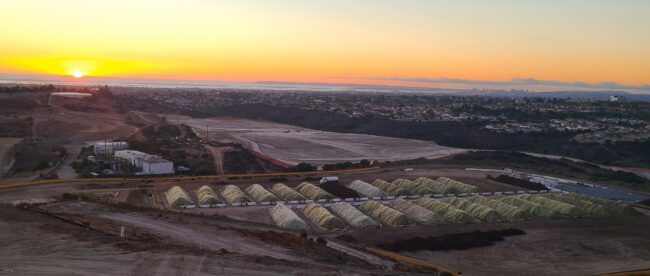Transforming Food Scraps into Fortune
A look at one of our changemaking clients, County of San Diego Department of Public Works
by Anne Stokes
Ask any gardener and they’ll tell you compost is as good as gold—black gold, that is. Plants are healthier, grow bigger, produce more fruits, vegetables and blooms, and are less susceptible to pests and disease. Using compost reduces the need for artificial fertilizers, pesticides and water, as it retains more moisture than dirt alone. And the benefits extend beyond your yard: Artificial fertilizers and pesticides end up in watersheds and pollute the water we all depend on. Fortunately, compost can be used to protect our watersheds too.
“What compost helps to do is improve groundwater quality by reducing the amount of pollutants that enter the groundwater system,” says Marco Cervantes, environmental manager at the Otay landfill. “It’s kind of like a sponge, the compost absorbs all those nutrients, all those metals, salts … before they have a chance of getting into the groundwater table.”
Recycling green materials and food scraps—which creates compost—even has global benefits. According to CalRecycle, organic materials make up more than a third of materials in landfills. And the methane gasses they emit contribute to the negative health effects that are already occurring in California.
Diverting organic materials from landfills not only prevents millions of pounds of valuable materials from going to waste, it helps keep our state clean and people healthier.
“One of the goals of SB 1383 is we’re trying to reduce … gasses like methane from the landfill. If people can recycle their food, we’re then reducing that amount of methane,” says Risa Baron, municipal manager for Republic Services. “If we can divert people’s food (scraps) from the landfill, it gives a longer life to our
landfill.”
The good news is the County of San Diego is making it easier for everyone. Residents can recycle their food scraps and yard trimmings in their weekly pick up. After eight weeks of processing at the composting facility, the organic material is transformed into that black gold. It’s shared with multiple city and county agencies where it’s used for public parks and other spaces. It’s also available for sale to the public and the Otay landfill even offers free compost giveaways several times a year.
“If we really want to support environmentally friendly and sustainable practices, this is something that needs to be done,” says Baron. “It’s a better path.”
Related: Small Change Creates Big Difference

